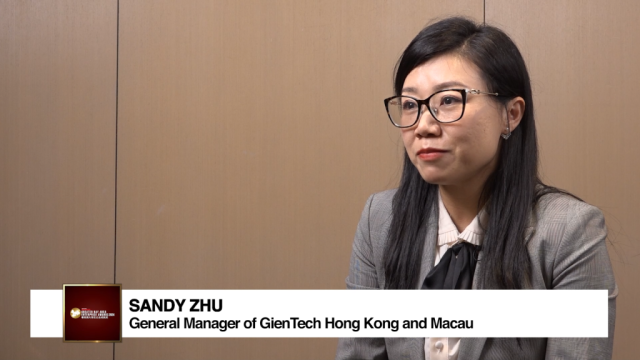
Embattled Hong Kong hotels brighten up on tourism
Declining tourist arrivals almost pushed Henderson Land to exit the Hong Kong hotel scene.
Hong Kong Business’ annual hotel industry survey revealed very minimal movements in the largest hotel rankings this year. L’hotel Nina et Convention Centre retained its top spot with 1,608 rooms, followed by Regal Airport Hotel with 1,171 rooms. Regal Riverside Hotel, Harbour Plaza Resort City and Panda Hotel rounded out the top five with 1138, 1,102 and 911 rooms, respectively. There was also literally no room for movements in the rankings as room count dropped by a measly 0.04% from 36,324 to 36,342.
This year, declining tourist arrivals from mainland China almost pushed Henderson Land to exit the Hong Kong hotel scene. However, analysts are now positive that a recovery has thankfully sprouted providing a breather to the battered sector — one that could even grow into a sustained boom. The middle of 2017 saw a nascent recovery in inbound tourists to Hong Kong, benefiting three- to four-star operators like Far East Consortium, and there is optimism that the nearing completion of key projects such as the landmark bridge connecting Hong Kong to mainland China and Macau will further drive up arrivals.
An increase in overnight visitors led by those from Mainland China stimulated demand for hotel accomodation in the middle of 2017, enabling a recovery in hotel occupancy, particularly for three-star hotels, said Jeff Yau, analyst at DBS, in a research note. He had projected a 2.4% growth in visitor arrivals in 2017 to 58 million, driven primarily by overnight visitors, and that the number of visitors from the Mainland and outside China to grow 2.5% and 2%, respectively, in 2017.
The return of overnight visitors has been stimulating the recovery of the hotel market, said Yau, with medium-tariff hotels, or equivalent to a three-star rating, showing noticeable improvement. Meanwhile, occupancies of high-tariff A, equivalent to a five-star rating, and high-tariff B hotels, equivalent to a four-star rating, have also improved.
“Medium-tariff hotels fare much better. With rising occupancy on one hand and a low comparison base on the other, medium-tariff hotels have regained pricing power,” said Yau, citing room rate growth and occupancy gains that led to a boost in revenue per available room, or RevPAR. By comparison, five-star hotels have continued to see pressure in their room rates.
One other positive trend for the hotel sector in 2017 was the renewed buoyancy in hotel investment market. Yau said a wide array of buyers, from local investors to China-based developers, have shown stronger interest. But property yield could take more time to pick up as it has remained relatively low amid the hotel market’s early-stage recovery.
Hong Kong connectivity
The enhancement of Hong Kong’s connectivity through ambitious transportation infrastructure projects was also a key trend in 2017 as it lent support to the idea that the recovery is the beginning of a sustained boom rather than a blip. Industry analysts hold a sanguine outlook on the positive impact a new bridge, airport runway, and rail link, amongst others, will have on inbound visitor traffic growth in the coming years.
The Hong Kong-Zhuhai-Macau bridge, or HZMB, which is expected to open to traffic some time in 2018 or later, will give added value to Hong Kong as a destination hub as it will put the three cities of Hong Kong, Zhuhai in mainland China, and the special administration region of Macau within an hour’s commute of each other, said John A. Girard, vice president of development, area general manager (Hong Kong) of Regal Hotels International, and general manager of Regal Airport Hotel.
HZMB will cut traveling time between Zhuhai and Hong Kong from more than 3 hours to around 40 minutes, which could encourage more residents in the western part of Pearl River Delta to travel to Hong Kong, said Yau. The landmark bridge project could also encourage more incoming tourists to visit Macau after Hong Kong, potentially increasing their length of stay in the latter.
Hong Kong also has other transportation projects in the pipeline, namely the Express Rail Link, or XRL, and the third runway at the Hong Kong International Airport, or HKIA, which are expected to be completed later this year and in 2023, respectively.
Yau said the XRL will connect Hong Kong to mainland China’s high speed railway network via Guangzhou and Shenzhen. Construction for the 26-kilometer rail link commenced in 2010 with Hong Kong footing an estimated $85.3b of the cost. Expected to come into service in the third quarter of 2018, the XRL “should enhance transportation links between Hong Kong and southern China, which should be positive for the city’s long-term inbound tourism growth.”
Meanwhile, the development of the third runway at the HKIA in March 2015, which is expected to be completed in five years with an estimated total development cost at $141.5b, would allow the airport to handle 30 million additional passengers by 2030. This should be crucial for inbound tourism growth over the long term,” said Yau of the planned three-runway system, citing projections that HKIA will handle 102 million passengers by 2030.
Disruptive technology
In 2017, technology-based startups continued to disrupt multiple sectors, and hotels are no exception. Hong Kong hotels are particularly focused on assessing the potential competitive impact of short-term accommodation rental platforms like Airbnb. Many are also keen on leveraging technology trends from digitisation to artificial intelligence to attract more guests and improve their service satisfaction.
“Given the constraints, Airbnb is unable to cater for the needs of group travellers and sophisticated business travellers. It may hold appeal to those seeking affordable short-term accommodation,” Yau said. “We believe that Airbnb targets mainly guests who book extended stays of more than one week. All considered, the impact of Airbnb on the Hong Kong hotel industry should not be overplayed,” he added.
A bigger concern, said Yau, is the rise of technology that could reduce the need for business travel involving face-to-face meetings. “Businessmen are now able to interact with each other using virtual alternatives such as video conferencing, which may have profound implications on the business model of five-star hotels in the long term as business travellers are their bread-and-butter clientele,” he said.
But Girard noted that technology is not only a harbinger of competitive threats. It also presents opportunities, such as enabling hotels to deliver a better guest experience, which he said leads to higher loyalty and satisfaction.
Regal Hotels enhanced their online room booking platform Regal Web with new features that led to a better customer booking experience. The hotel also introduced a Guest Indulgence programme that provides privileges, a welcome gift and a personalised greeting upon arrival. The program targets corporate travellers that are on their first-time stay to ensure they are delighted enough to make a repeat booking, which is encouraged with an e-gift for the guest’s next visit.
Regal Hotels also installed an e-housekeeping system to improve the delivery of guest personal services, as well as a high-definition LED wall that allows for enhanced visuals during events or meetings.
2018 outlook
Girard expects 2018 will remain a challenging year, but holds a “positive” outlook amidst a concerted push by the Hong Kong Tourism Board and its travel partners to keep the territory a preferred tourist destination. He foresees hotel supply growth to accelerate at a five-year CAGR of 4.3% between 2016 and 2021, higher than the 3.6% growth in the 2011 to 2016 period, but also said concerns should not be overplayed. The hotel is counting on the strong performance of the MICE meeting business segment and support from the trade fair business.
He anticipates buoyant commercial property valuations, which could convince owners to redevelop well-located three- to four-star hotels into office or commercial buildings. “If The Excelsior, J Plus, and Crowne Plaza Hong Kong Causeway Bay are redeveloped into commercial properties, hotel inventory in the area would be cut by 1,200 rooms or 12%.”
Factoring in growth projections in supply and in overnight visitors, he expects hotel occupancy to stand at 90% in 2017, and then hover around 89% to 91% in 2018 to 2021.
“With consistently high occupancy expected, hotel room rates and therefore RevPAR should see upward pressure,” said Yau.






















 Advertise
Advertise









